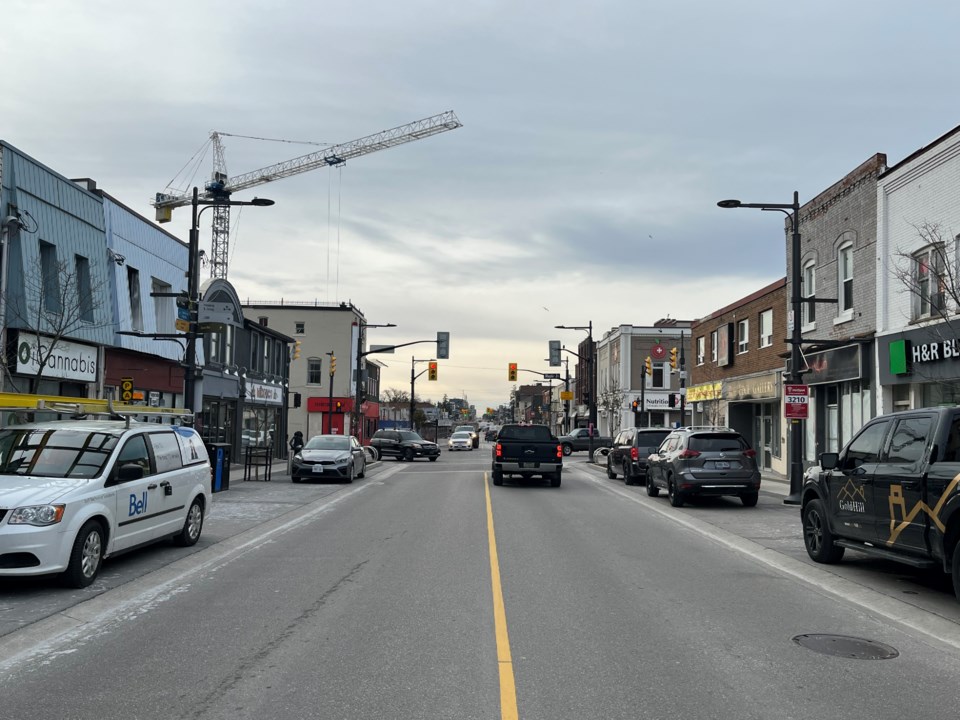In the late 1970s, there was a plan to do in Barrie what was being done in cities across Canada to “save” their downtowns: build a large indoor mall. It would stretch from Bayfield Street to High Street, requiring the demolition of about 30 homes.
It didn’t get past the planning stage. According to the book Beautiful Barrie, the project failed because of opposition from area residents and high interest rates.
Just as well. Barrie’s failure to build a downtown mall turned out to be the best thing it could possibly have done. It was progress by inaction.
History has shown us similar malls were a disaster in all but a few very large cities. They became the whitest of elephants, becoming more mausoleum than mall. If they weren’t torn down within 20 years as private retailers fled, they became a place to dump municipal services or offices with perhaps a coffee shop or two being the only surviving businesses.
In hindsight, it’s easy to see why such plans were misguided. Why would anyone go downtown to shop indoors when they could just as easily go to any other similar shopping area, probably one that was more convenient to where they live?
Furthermore, people who go downtown tend to do it for everything that malls aren’t. They go downtown for unique, often locally owned businesses. They go downtown to enjoy the outdoors.
I remember a long-running advertisement for an Orillia shopping centre that went: “It never rains in the mall.” Yes, I thought, and the sun also never shines.
Successful downtown indoor malls, such as Toronto’s Eaton Centre or Ottawa’s Rideau Centre, are in cities that have good public transit, attract a large number of tourists and have a substantial residential population close by.
That last reason makes me optimistic about the future of Barrie’s downtown. Unlike most Canadian cities, Barrie has done a pretty good job of keeping people living in the downtown, and those people are much more likely to support downtown shops, restaurants and services.
A study by David Gordon of Queen’s University found Barrie was one of only two mid-sized Ontario cities — the other was Kingston — where the core’s population grew between 2006 and 2011. The growth was only 0.2 per cent, but it was still growth as a time when the downtown population was shrinking in comparable cities.
And more recently, Karl Chastko, an analyst with Statistics Canada’s Centre for Demography, reported Barrie’s core population grew by 4.5 per cent during the pandemic, the same as the city as a whole. He also noted Barrie, which was Canada’s 35th largest municipality in the 2021 Census, has the 21st largest downtown population.
And as anyone who has followed planning applications knows, there is much, much more on the books.
The Lakhouse on Dunlop Street East, with its 193 units, is nearing completion and work is well underway on the first of two towers which will make up the 480-unit Debut Condos on Dunlop Street West.
And it seems hardly a week goes by when there isn’t another application for a huge new residential development, either in the heart of the downtown or on the periphery, such as the former YMCA land and near Essa and Bradford streets, all to accommodate the 23,400 people provincial planning documents expect to live in the core by 2031.
Will all the projects be built? No.
Will downtown turn around overnight? Again, no.
But all the signs indicate Barrie’s downtown has a bright future.
Barry Ward is a veteran editor and journalist who also served on Barrie city council for 22 years. Fair Comment appears regularly in BarrieToday.



